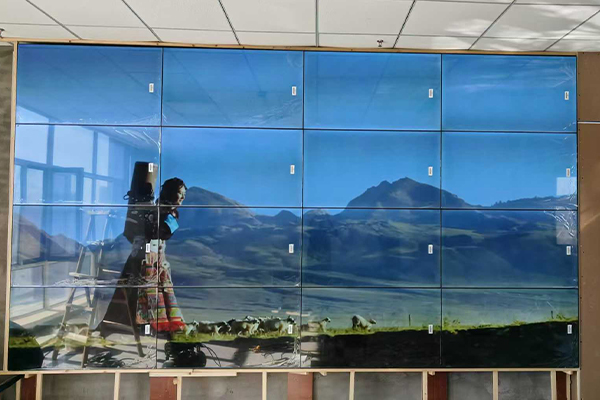How to choose LCD splicing screen?
The rapid development of the electronics industry today has promoted the development and growth of the LCD splicing screen market, and its application has become very common. For example, LCD splicing screen can be seen in telecommunications networks, video surveillance systems, dispatching and command, public utilities, traffic control, security monitoring systems, conference rooms, stage entertainment, TV studios, securities, exhibition centers, shopping malls, banks, office service halls, corporate customer recruitment screens, chain stores, etc.
1. Screen Size:
When purchasing an LCD splicing screen, the first thing to consider is screen size. For an LCD splicing screen, the panel size is the size of each tiled unit. For screens with the same specifications, LCDs offer a larger viewing area than CRTs. Due to individual visual preferences and user needs, the screen size of the splicing screen varies.
2. Response Time:
Currently, the biggest selling point of LCD splicing screens is the continuous improvement of the system's response time. Response time determines the number of frames per second a video wall can display. Typically, when the display speed exceeds 25 frames per second, the human eye perceives rapidly changing images as continuous. In other words, the faster the response time, the more vivid the display of rapidly changing images.
3. Brightness and Contrast:
Liquid crystal is a substance between a liquid and a crystal. It cannot emit light on its own, so the brightness of the backlight determines its brightness. Generally speaking, the higher the brightness of an LCD splicing screen, the more vivid the colors displayed, and the better the visual effect. The unit of brightness expressed in LCD video walls is cd/m². A typical LCD video wall has a brightness of 250 cd/m². If the brightness is too low, the displayed colors will appear dim, causing fatigue after prolonged viewing.
Contrast ratio is a ratio of brightness—the brightness of a white screen divided by the brightness of a black screen in a dark room. If the contrast ratio is less than 250:1, the screen will appear blurry. Of course, higher brightness and contrast ratios are not necessarily better. Prolonged viewing of high-brightness LCD screens can also easily cause eye fatigue. High-brightness LCD video walls can also cause excessive wear on the lamps, shortening their lifespan. Therefore, consider this carefully when purchasing.
4. Color reproduction:
The color reproduction of LCD video walls has always been a concern. Many manufacturers currently offer 16.2M and 16.7M standards, which provide a direct reflection of the color reproduction capabilities of LCD video walls. If you have stringent color requirements for your LCD video wall, a 16.7M resolution is the best choice.

